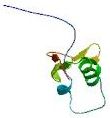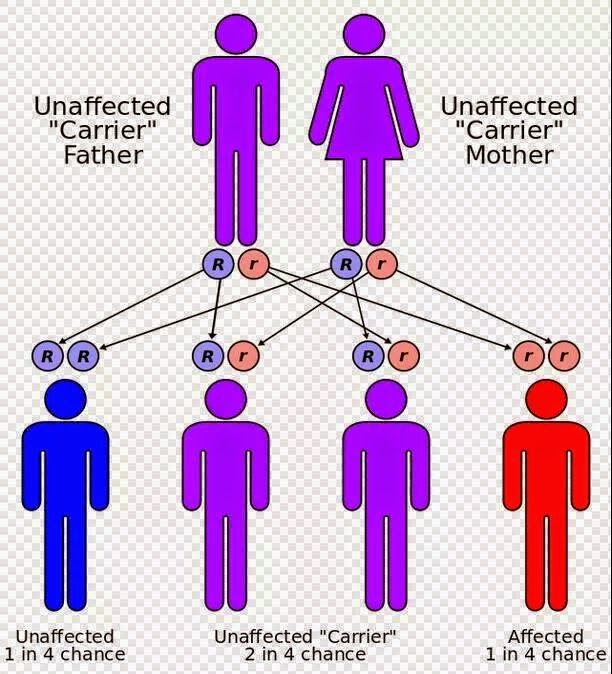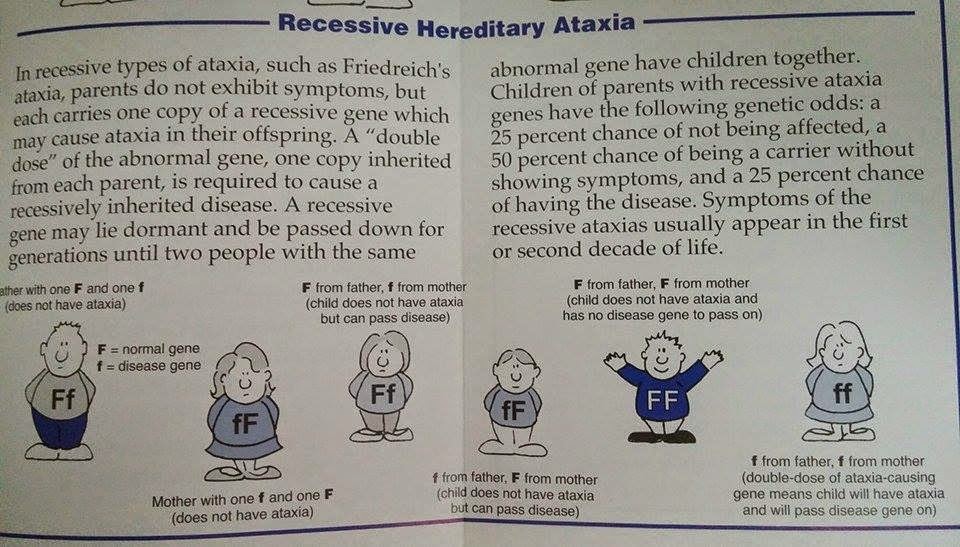The Beginning - How we found SCAR9
Christina Paul
I have been working on this piece by piece since the day we got the results of Hannah's genetic testing. December 3, 2014 that day is pretty much a blur to me, finding out the genetic results, left me ending the day feeling completely numb! I can't remember a time I felt so speechless, and at a loss for words as I did on that day! I let it sit with me for a while, and the stack of papers sat on the table untouched for about 3 days... I couldn't bring myself to go over them. It was confusing, because I heard what they said, but at the same time felt like I knew nothing and after 3 days, I had to snap out of this darkness I was in, and figure out just what exactly the facts were. So I grabbed the stack of papers I left the office with, and began to read them... Of course now my mind is going a million miles a minute because a ton of questions are popping up, that I wished I had processed and thought of on the day we were in the office! Then I found myself getting confused, and angry, and my heart felt so very heavy I couldn't breathe! I just wanted to curl up into bed with Hannah and never let go of her. I knew I couldn't allow myself to stay in this mindset for very long, so I quickly got my head clear, and then came attack mode! I was ready to figure this out, and wasn't stopping until I got the answers I needed. This is what I do best! Research, and call around to anyone who will listen to me, and give me the answers I need... Even if it means hitting a brick wall every so often... I know this isn't going to be easy by any means... Who was I kidding...? This is Hannah were talking about, what part of her is easy lol, this is what I am accustomed to. However I didn't prepare myself to discover half of the information I have gathered so far! How does one process such a disorder! How does one digest such information...?
I still don't have the answer to that. I don't know that I ever will...
So the genetic testing revealed a couple of interesting facts...
In this I have also included links next to some information, to better educate you with what each individual DX means…
(SCAR9) Spinocerebellar ataxia autosomal recessive 9 (GENES identified are ADCK3) this type of ataxia was identified in a family from Algeria. The symptoms begin in childhood and in some cases, there may be mental subnormality or learning difficulties.
This type of ataxia is caused by sequence changes in a gene called CABC1.
Coenzyme Q10 D4 http://www.omim.org/entry/612016
COQ8; ARCA2; CABC1; SCAR9; COQ10D4
The first variant is: c.1821C>A (p.Y607*) —
This is the one that Ambry is pretty sure is a pathogenic mutation and the 2nd variant is: c.1334C>A (p.T445K) — this is the one that Ambry is not sure if pathogenic or not but they think it is likely to be pathogenic
It is definitely not common to have these two variants together in one person
— both variants are very very rare. Hannah may just be the only one!
The ADCK3 gene encodes a mitochondrial protein similar to yeast ABC1, which functions in an electron-transferring membrane protein complex in the respiratory chain. It is not related to the family of ABC transporter proteins. Expression of this gene is induced by the tumor suppressor p53 and in response to DNA damage, and inhibiting its expression partially suppresses p53-induced apoptosis. Alternatively spliced transcript variants have been found; however, their full-length nature has not been determined. [provided by RefSeq, Jul 2008]
This new DX affects and causes the following which we all know Hannah is struggling with now, and has been for some time...
Exercise intolerance
intellectual disability
neurological disorders
epilepsy
developmental delay
it also causes clumsiness and balance coordination issues (which she’s struggling with)
cognitive deficits
muscle weakness
swallowing difficulties
behavioral issues
choking
speech impediments
The symptoms above have been ongoing for quite some time now...
Most started back around the age of 2!
The balance and coordination have been more recent and increasingly worse over time...
*This IS a progressive disease because her mutated genes includes very severe phenotype, meaning she meets at least 50% of the symptoms involved. The problem with this genetic disorder, is that in the future she is more than likely going to develop intellectual regression, and muscle degeneration...and this degenerative brain disease affects the cerebellum, and her heart, liver, respiratory system, and kidneys.
For those of you who haven’t met Hannah, here is a little bit about her, and our story-
Remembering back to when I was pregnant, I remember Hannah was never a very active baby. At each of my check-up appointments, they would have to stimulate her, in order to get her to move. She was just an under active baby even in the womb. Hannah was born about 2 weeks past my due date, and I had a partial induction. They softened my cervix, and broke my water, and that's all that was needed, the rest we did on our own. She was born without complications, and we left on the second day. At around 3 months of age, Hannah came down with Roto Virus, and was developing ear infections constantly within the first year of her life, and was put on antibiotics which seemed like every other month. When she turned a year old, we noticed that she was acting unusual at her first birthday party. She wasn't interested in the cake, and having everyone there seemed to be a bit much for her. At that age offering different foods to her never seemed to be an issue... She ate a pretty large variety of different things. Then one day she ended up choking on a piece of cereal, and I'm not sure if it was coincidental, or if it was the beginning of what we didn't know we were going to end up dealing with ongoing..
Around 15 months old, her pediatrician suggested she be evaluated by early intervention, she was evaluated and accepted without a doubt. They noticed unusual behaviors when approached with several different sensory objects, she wouldn't walk barefoot on the grass, she didn't like mushy textures, she would gag with the feel of play-dough, and they also noticed she had low muscle tone, weak facial muscles, and tongue, and had a "bear stance" when going from sitting to standing because of her high chest wall. She also wouldn't walk with her feet flat on the ground, and would often tip toe. I also noticed that she wouldn't or couldn't eat anything with a thick consistency, such as stage 3 baby food. She would spit out the chunks, and or choke. The doctors didn't seem concerned. At around 2 years old she had her first seizure, was admitted to the hospital, and diagnosed with Grand mal, and Petit Mal seizures, and was placed on anti-seizure medications.
She began not to eat the things she was accustomed to, and was still drinking from a bottle because the sippy cups seemed to difficult for her to suck from. She was also still on formula until she was 5 years old. Potty training was difficult, and she still wasn't talking. Before the age of 5, she had 2 sets of tubes placed, her tonsils out, and her adenoids out twice. She went to preschool, and it was there that she ended up getting the help she really needed. She went through several evaluations, and saw many specialist. She was 4, and was diagnosed with Autism, and sensory integration. She was involved in physical therapy, occupational therapy, and speech therapy. She picked up sign language as her form of communication, and before long was able to sign about 900 words! When Hannah entered kindergarten, she struggled quite a bit. It was a constant struggle for her, and became frustrating because they seemed unable to tolerate her, and handle her. They were literally restraining her for more than 2 hours a day. That was completely unacceptable to me, and I pulled her out of kindergarten since it's not required here in NY state to attend. Hannah started drinking from a regular cup around the age of 6, and was fully potty trained at 7! She still needs help in the bathroom everyday with wiping, and washing her hands, brushing her teeth. She can't do her own hair, get dressed, bathe, or make her own foods. She doesn't know how to tie, button, or zipper, and can't put her own shoes on, unless they're slip on shoes. School has always been a constant struggle for Hannah, and it wasn't until 3 years ago that she found her perfect match at a Boces program. She has made so many strides, and has grown so much through this program!
Hannah struggles with anxiety, and has slight aggression at times that consist of biting, spitting, hitting herself or others. She will pinch, or tease others especially at school. She loves having friends, and adores when her cousins come over to play. She has gotten much better over the years interacting with other kids her age. She enjoys watching tv, playing on her computer, iPad, or Xbox. She's musically inclined, and can teach herself any song on the keyboard by just watching it being done on YouTube.
Hannah is now 13 years old, and for the most part always happy, and her favorite words are "smile, SMILE with your teeth" She loves her iPad, computer, TV shows, and Lalaloopsy dolls. Her other favorites are Disney Cars, Buzz Lightyear, Toy Story, and Nick Jr. She has taught herself how to speak many different languages such as Chinese, Swahili, French, Spanish, and knows sign language very well! She can teach herself to play just about anything on the keyboard by following YouTube. Going out into the public still poses its challenges, and most places requires us to use her wheelchair, because walking more than 10 minutes or so, she becomes in pain, or gets very fatigue. She has no safety awareness when out in public, and no safety awareness while eating, and must be monitored at all times while eating because she chokes easily. She has a lot of struggles though, and even though her life has had its challenges, she still is the happiest kid I know, and very compassionate, and loving.
Hannah struggles with Sensory Integration Dysfunction Disorder and because of that doesn't have the best diet known. She has been eating the same ritual choice foods since she was about 2 years old, which includes the following Peanut butter sandwich for breakfast, lunch, and dinner. With that she has a Gogurt, and either goldfish, pretzels, saltines, veggie sticks, or veggie chips. She also enjoys cheese puffs, or cheese balls, french fries on occasion, chocolate chip cookies, or Oreos, popsicles, or ice cream (no cones) cheerios, or fruit loops (when she remembers she likes them). She will drink just about anything, but her favorite is chocolate milk, and cold water. She has never tried anything else. No meats, no pizza, pasta, macaroni and cheese, eggs, nothing "typical" kids would have tried by now. She has gotten much better over the years interacting with other kids her age. She has been receiving Occupational Therapy, Speech Therapy, Physical Therapy, and (APE) Alternative Physical Education since kindergarten
UPDATE SINCE: May Hannah was place on a feeding GJ- Tube continuous feeds and consumes nothing by mouth but small sips of water. She suffers from paralysis in her stomach and severe gastroparesis, as well as sever EOE, and this will be for the rest of her life.
This past summer she had Achilles tendon lengthening or heel cord lengthening surgery on both legs, to help with her gait, and muscles. She was in dual cast for 7 weeks.
She now wears AFO braces on both legs, and soon transitioning into HKAFO braces, when they come in and are finished to help with her balance, and stability.
She currently takes a few different medications:
Fluoxetine (for aggression, and anxiety)
24 hr continuous GJ feeding tube Neocate splash through J-Tube
Xanax PRN
Megace (stop of menstrual cycle)
Trazodone (sleep)
Clonidine (sleep)
She has seen just about every specialist you can imagine so far
A run down on all of the active providers Hannah sees:
Endocrinologist
ENT
GYN
Orthodontics
Orthopedics
Physical Therapist
Psychologist
Psychiatrists
Speech Therapist
Occupational Therapist
Podiatrist
Hematologist
GI
Genetics
Neurodevelopmental specialist
Neurosurgical specialist
Feeding specialist
Behavioral specialist
Pediatrician
optometrists
Allergist specialist
Neurology
pediatric Cardiologist
Rheumatologist
choices pediatric palliative care
She has had whole body MRI scans, psychiatric evaluations, IQ testing, blood work for everything you can think of I'm sure, Microarray testing, who exome sequencing, Auditory Brainstem hearing test, allergy testing, endoscopy, colonoscopy, bone age scan, and also seen a behavioral specialist.
It wasn't until she had this whole exome testing that we had finally gotten an answer.
On top of all of this, she still has what we have already known:
Autism
intellectual disability
Eosinophilic Esophagitis (EE) is a rare white blood cell disease. It is characterized by elevated eosinophils in the esophagus. It is an auto-immune disease that causes the body to think food is a parasite and attacks itself. It causes the body to be allergic to many or all foods. Listed in the NIH http://www.eosinophilicesophagitishome.org/
Anxiety
chronic constipation
short stature, growth retardation her height is 4'5 legally anything under 4'12 is considered dwarfism without the gene.
She also hasn't grown any height in about 4 years
She has stumpy hands, feet, limbs, and torso... her shoes are still a size 4 in kids... Haven't changed in about 3 years.
anesthesia complications (due to delayed gastric emptying - her food doesn't digest as it normally should)
http://www.healthline.com/health/gastroparesis#Overview1
Obesity (still trying to figure out the excessive weight gain when she has had a total caloric intake of 1450 calories a day for the last 5 years **UPDATE her total caloric intake is now 1185 calories per day
premature puberty menses onset age 9
insomnia (without the use of sleep medications)
developmental delay
delayed gastric emptying (gastroparesis) http://www.healthline.com/health/gastroparesis#Overview1
Acanthosis nigricans http://www.healthline.com/health/acanthosis-nigricans#Definition1
Prominent fetal finger pads (which is rare) http://elementsofmorphology.nih.gov/index.cgi?tid=bf858e24ede407d7
Infantile Cerebral Palsy
Heart Murmur
ASD http://www.mayoclinic.org/diseases-conditions/atrial-septal-defect/basics/definition/con20027034
Hemoglobin C Disease Trait
She has stumpy hands, feet, limbs, and torso her shoes are still a size 3 in kids technically she's in preschool shoes lol 3.5 is school age
Prominent Fetal Finger Pads (which is very rare) the little puffiness you see on babies fingers when born and disappear. She still has them. Her hands are the size of a 5 year old.
Scoliosis with Kyphosis - There are 12 rib-bearing thoracic vertebral bodies and 5 ribless lumbar type vertebral bodies. There is a 11 degree thoracic levoscoliotic curvature measured from T6-12. Rotatory grade 2.
There is 12 mm right superior pelvic tilt. There is 8 mm positive coronal imbalance.
Thoracic kyphosis of 41 degrees. Lumbar lordosis and 32 degrees. 13 mm positive sagittal imbalance.
MRI SPINE CERVICAL FINDINGS: The alignment is anatomical.
Central disc protrusion is seen at the C5-C6 level and C6-C7 level.
Type AB+ POS (RARE) blood type Caucasian 3%, African American 4%, Hispanic 2% and Asian 7% according to the American Red Cross Blood Types and Population.
Ataxia -muscle weakness
mitochondrial disorder
XR SPINE ENTIRE THORACIC AND LUMBAR There is a levoconvex scoliosis of the thoracolumbar spine measuring approximately 7 degrees. There is mild-to-moderate narrowing of the medial compartment of the knee and a rather comparatively diastatic appearance of the lateral compartment with a somewhat diminutive lateral femoral condyle, possibly a congenital variation.
Recent allergy back scratch test showed allergies to Peanuts All Tree nuts Soy Wheat Bananas Blueberries Strawberries All trees Grass (especially Ragweed and Timothy) Molds Dust mites
So let's continue. Here is some more information that was either gathered along my research, or has been sent to me regarding the Genetic DX; some of it gave me some insight on what exactly were up against.
The rest I still can't comprehend, digest, or fully understand in a non-medical perspective.
Hudson Freeze, a glycobiologist at Sanford-Burnham Medical Research Institute, in La Jolla, California, and the foremost authority on CDG (Congenital Disorders of Glycosylation) He's extremely intriguing, and if you go to his page, and read the information on Glycosylation, it really makes you question, has Hannah been tested for this?
The symptoms sound all too familiar. http://www.sanfordburnham.org/Talent/Pages/hudsonfreeze.aspx
He noted that I gave him to much credit, but he will do his best in trying to help us.
He has forwarded our story to- Christina Waters at Global Genes http://globalgenes.org/
Sue Hagen
Patient Services Director
National Ataxia Foundation
2600 Fernbrook Lane No Ste 119
Minneapolis, MN 55447-4752
763-553-0020
www.ataxia.org
susan@ataxia.org
Hello Tina, The very frustrating thing is that with rare diseases, there is not a great deal of information, particularly on the prevalence. When the National Ataxia Foundation was founded over 50 years ago, one of its first goals was to locate others who had the disease.
Quoting from the University of Minnesota’s Ataxia Center Website is the following: “Many of these ataxias are quite rare and have only been reported in one family in the world.
To make matters more confusing, some autosomal recessive ataxias used to be named with the acronym ARCA
(Autosomal Recessive Cerebellar Ataxia).
Next are some links that provide some very helpful information:
http://www.ataxiacenter.umn.edu/aboutataxia/hereditary/otherrecessive/home.html
http://www.ataxia.org/connect/default.aspx
http://en.wikipedia.org/wiki/Dominance_(genetics)
http://www.ncbi.nlm.nih.gov/pubmed/
http://www.ncbi.nlm.nih.gov/books/NBK1138/
http://www.ojrd.com/content/8/1/173
http://www.nextprot.org/db/entry/NX_Q8NI60
http://www.fda.gov/Drugs/ResourcesForYou/Consumers/ucm143563.htm
http://stemcelltreatmentnow.com/stem-cell-treatment-for-ataxia-3/
I have made calls, and left messages with the:
Genetics and Rare Disease Center and spoke with someone there.
University of Chicago Medicine the PEDS Ataxia Clinic in Neurology (Dr. Kenneth Silver)
Researchers at the NIH clinics Kenneth H Fischbeck, Cynthia D Crews,
Andrew Singleton, and Alice B Schindler
Physician University of Washington
Thomas Bird - Department of Neurology and Medicine Seattle Duke University Durham, NC
Vandana Shashi, and David Goldstein whose clinical practice focuses on children with birth defects,
intellectual disabilities, and developmental delays
My list continues with calls I still have yet to complete, and so forth
Daniel MacArthur, a genetics researcher at Massachusetts General Hospital
Physician University of Washington Thomas Bird department of Neurology and medicine Seattle
Gregory Enns, the director of the biochemical-genetics program at Stanford’s Lucile Packard
Children’s
Hospital
Matthew Bainbridge Baylor College of Medicine, in Houston
The Broad Institute of M.I.T. and Harvard
Johns Hopkins
Columbia
University of California, San Francisco.
The neurology clinic for Ataxia at University of Michigan,
University of Minnesota (BAARC)
University of Chicago
University of Florida Ataxia Center of Excellence (Gainesville FL)
University of South Florida Ataxia research center
UCLA Ataxia and Neurogenetics Program
Psychomotor Clinic, Birmingham, AL
Movement Disorder Clinic/Ataxia Clinic University of Arizona
Ataxia Clinics in Atlanta, Georgia, Chicago, Illinois
University of Iowa
University of Kentucky
John Hopkins/Maryland
University of Michigan
University of Minnesota
University of Missouri, Nebraska, New Hampshire, Rochester, NY, Ohio, Oklahoma, Oregon, PA, SC, TN, South Dakota, Texas, Utah, Vermont, West Virginia, Wisconsin, and Canada!
That's what's on the list, and I will call them all! I have nothing but time, and time is of the essence!
I have gone over everything so many times, and wondered if there are any of these "LABELS" that don't fit. Each time the answer is sadly NO! How can a 13-year-old little girl have such a complex medical history, and to top it all off, now be slammed with such a rare DX that we are now unsure as to what our next step in our journey is! I want quality of life, not quantity! So whatever that means, I need to figure out how to achieve it! This is my role not only as her MOM, but her Advocate! Her voice and her fighting chance for an awesome life she greatly deserves!
Thank You for taking the time to read our story.
If you have related to anything you have read, please reach out to me at mindspace80@gmail.com
Also if you could please share this link to your friends, and family, and anyone you know it would really help us get our story across the globe. We are desperately searching for answers, and a support network.
Even if just reaching out to say Hi, would mean a lot! www.ezramonet.com
Add me on Facebook- https://www.facebook.com/lsbnlover
The bigger I build my support network the better! Let's fight this together!!
This really took a lot of courage for me to get to this point, putting our story out there for the world to view, analyze, judge, and to form opinions.. It's actually pretty scary.
So thank you once again!
Christina, and Hannah
"This is a Normal reaction to an abnormal situation"
“she was fierce, she was strong, she wasn’t simple, she was crazy and sometimes she barely slept. she always had something to say and that was ok. and when she was down, she got right back up. she was a beast in her own was, but one idea described her best. she was unstoppable and she took anything she wanted with a smile. -R. M. Drake”













